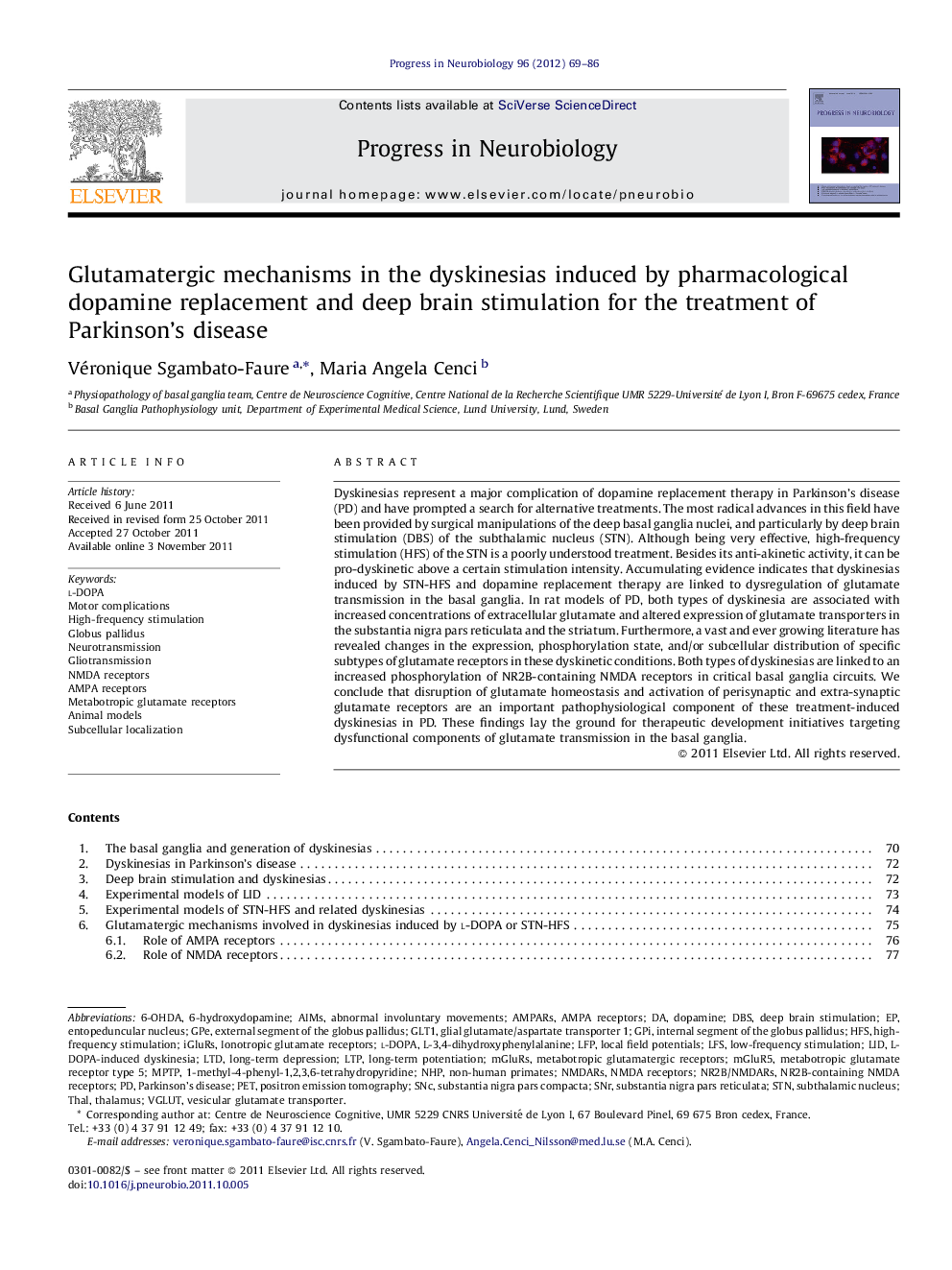| کد مقاله | کد نشریه | سال انتشار | مقاله انگلیسی | نسخه تمام متن |
|---|---|---|---|---|
| 6286628 | 1298474 | 2012 | 18 صفحه PDF | دانلود رایگان |

Dyskinesias represent a major complication of dopamine replacement therapy in Parkinson's disease (PD) and have prompted a search for alternative treatments. The most radical advances in this field have been provided by surgical manipulations of the deep basal ganglia nuclei, and particularly by deep brain stimulation (DBS) of the subthalamic nucleus (STN). Although being very effective, high-frequency stimulation (HFS) of the STN is a poorly understood treatment. Besides its anti-akinetic activity, it can be pro-dyskinetic above a certain stimulation intensity. Accumulating evidence indicates that dyskinesias induced by STN-HFS and dopamine replacement therapy are linked to dysregulation of glutamate transmission in the basal ganglia. In rat models of PD, both types of dyskinesia are associated with increased concentrations of extracellular glutamate and altered expression of glutamate transporters in the substantia nigra pars reticulata and the striatum. Furthermore, a vast and ever growing literature has revealed changes in the expression, phosphorylation state, and/or subcellular distribution of specific subtypes of glutamate receptors in these dyskinetic conditions. Both types of dyskinesias are linked to an increased phosphorylation of NR2B-containing NMDA receptors in critical basal ganglia circuits. We conclude that disruption of glutamate homeostasis and activation of perisynaptic and extra-synaptic glutamate receptors are an important pathophysiological component of these treatment-induced dyskinesias in PD. These findings lay the ground for therapeutic development initiatives targeting dysfunctional components of glutamate transmission in the basal ganglia.
⺠Dyskinesias represent a major complication of dopamine replacement therapy in Parkinson's disease (PD). ⺠Deep brain stimulation (DBS) is a very effective, but poorly understood treatment. ⺠Dyskinesias are induced by DBS and dopamine replacement therapy. ⺠They are linked to dysregulation of glutamate transmission in the basal ganglia. ⺠These findings lay the ground for therapeutic development initiatives.
Journal: Progress in Neurobiology - Volume 96, Issue 1, January 2012, Pages 69-86